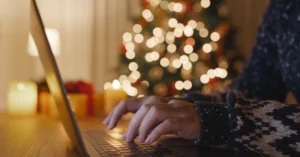Table of Contents
Mobile devices have become ubiquitous in virtually every society and every demographic, and the overwhelming presence of mobile devices is no different in K-12 schools. While some school districts have moved to ban cell phones from classrooms, others leverage the availability of mobile devices to enhance student engagement and classroom participation.
Mobile devices have not only become a cornerstone of modern pedagogical methods, but they also play a significant role in promoting equitable access to technology. For schools embracing technology to enhance learning experiences, effective mobile device management (MDM) becomes a crucial form of cybersecurity that allows school districts to manage, secure, and optimize the use of these devices. From safeguarding sensitive student data to overseeing device utilization in the classroom, mobile device management in an educational setting can be challenging, especially with cyber threats on the rise. By leveraging best practices suggested here, schools can create a safe digital environment for students and educators that is conducive to learning.
Importance of Mobile Device Management
School districts are charged with protecting a great deal of personal information, including academic records, health information, and even financial information. Without solid MDM strategies, schools expose themselves to significant risks, including data breaches and unauthorized access to confidential information. By implementing MDM, schools can safeguard this critical data, ensuring compliance with various regulations like the Family Educational Rights and Privacy Act (FERPA), the Children’s Online Privacy Protection Act (COPPA), and the EU’s General Data Protection Regulation (GDPR).
Mobile Device Management Challenges
One of the biggest challenges of MDM implementation is that there are a plethora of different devices and operating systems in use. With students bringing in their own devices and schools providing various types of hardware, managing compatibility and ensuring seamless operation across different platforms can be complex, impacting applications, security protocols, and user experience.
Heightening the urgency for schools to adopt comprehensive MDM strategies is the prevalence of hackers who are targeting schools with increasing frequency. Many districts, however, lack the necessary resources, both in terms of funding and personnel, to implement essential cybersecurity measures. This vulnerability not only jeopardizes sensitive student data, but it also disrupts the educational process, diverting resources away from teaching and learning.
Additionally, many teachers are overwhelmed by the rapid pace of technological advancements and the accompanying administrative demands, which can result in a reluctance to implement MDM policies and practices. Schools must foster a culture of zero trust and offer ongoing staff training to help educators and staff embrace safe use of technology.
Implementing Mobile Device Management Policies
School district mobile device management policies must provide a clear framework for the acceptable use of mobile devices in the school setting, outlining the responsibilities of students, teachers, and administrators. As a foundation for establishing a comprehensive MDM policy, districts must assess their technology infrastructures by evaluating existing device use and by identifying all existing software and apps that are being utilized by their schools. Stakeholders, including educators, IT staff, parents, and administrative staff, should be involved in this process.
The mobile device management policies established by school districts must promote security, efficiency, and user engagement, and procedures should cover:
Purpose and scope
- Define mobile device management goals (e.g., ensuring secure and appropriate use of devices for educational purposes).
- Specify whether the policy applies to school-owned devices, personal devices, or both.
Acceptable use policy (AUP)
- Outline permitted and prohibited device usage.
- Set expectations for classroom use (e.g., only for educational apps, no gaming or social media use unless authorized).
- Establish consequences for misuse.
Security and compliance
- Require password protection and automatic lock screens.
- Enforce encryption and remote wipe capabilities for lost and stolen devices.
- Define app installation policies (e.g., only approved apps administered by MDM).
- Restrict access to inappropriate content and unapproved networks.
Data privacy and monitoring
- Clearly state what data is collected by the school (location tracking, web activity, app usage).
- Ensure compliance with privacy laws (FERPA, COPPA, GDPR, etc., as applicable).
- Outline parental and student rights regarding data access and control.
Device management and support
- Specify who manages updates and software installations.
- Define procedures for reporting lost, stolen, or malfunctioning devices.
- Establish a help desk or support system for technical issues.
Bring your own device (BYOD) policy
- Require school-approved security apps and VPNs.
- Limit access to school resources (e.g., Wi-Fi, internal systems), based on security compliance.
- Define liability for damage, loss, or data breaches.
Policy enforcement and review
- Detail monitoring methods (e.g., MDM software, network logs).
- Set review timelines for updating policies as technology evolves.
- Communicate policies clearly to students, staff, and parents.
Training and Education for Successful Mobile Device Management
Providing regular training for educators and students regarding data privacy, online safety, and ethical use of technology promotes a culture of responsibility within the school community. Workshops, seminars, and online resources can be utilized to help ensure that all users are aware of their roles in maintaining a secure digital environment.
Additionally, schools should encourage educators to share insights and strategies for integrating technology into their teaching practices. By fostering a collaborative community, educators can learn from one another, share success stories, and develop innovative approaches to using mobile devices in the classroom. These efforts not only enhance the overall effectiveness of MDM strategies but also enrich the learning experience for students.
Mobile Device Management in K-12 Schools Is a Team Effort
Effective management of mobile devices in schools requires everyone’s support, from the district administration to educators, parents, and students. MDM is more than simply device oversight; it’s a powerful tool for helping ensure the protection of student data while allowing equitable access to resources. A proactive approach to the use of mobile devices in K-12 schools can enhance curriculum delivery and the overall outcome of students’ education
As schools continue to navigate the complexities of MDM, training and education play pivotal roles in ensuring that school districts are equipped to utilize technology effectively. By fostering a culture of collaboration and continuous improvement, schools can adapt to the ever-changing technological landscape and remain at the forefront of educational innovation.
Ultimately, achieving success in mobile device management requires a holistic approach that prioritizes the needs of students, educators, and the broader school community. By embracing technology as a powerful tool for learning and growth, schools can create a vibrant digital ecosystem that prepares students for success in an increasingly interconnected world.






